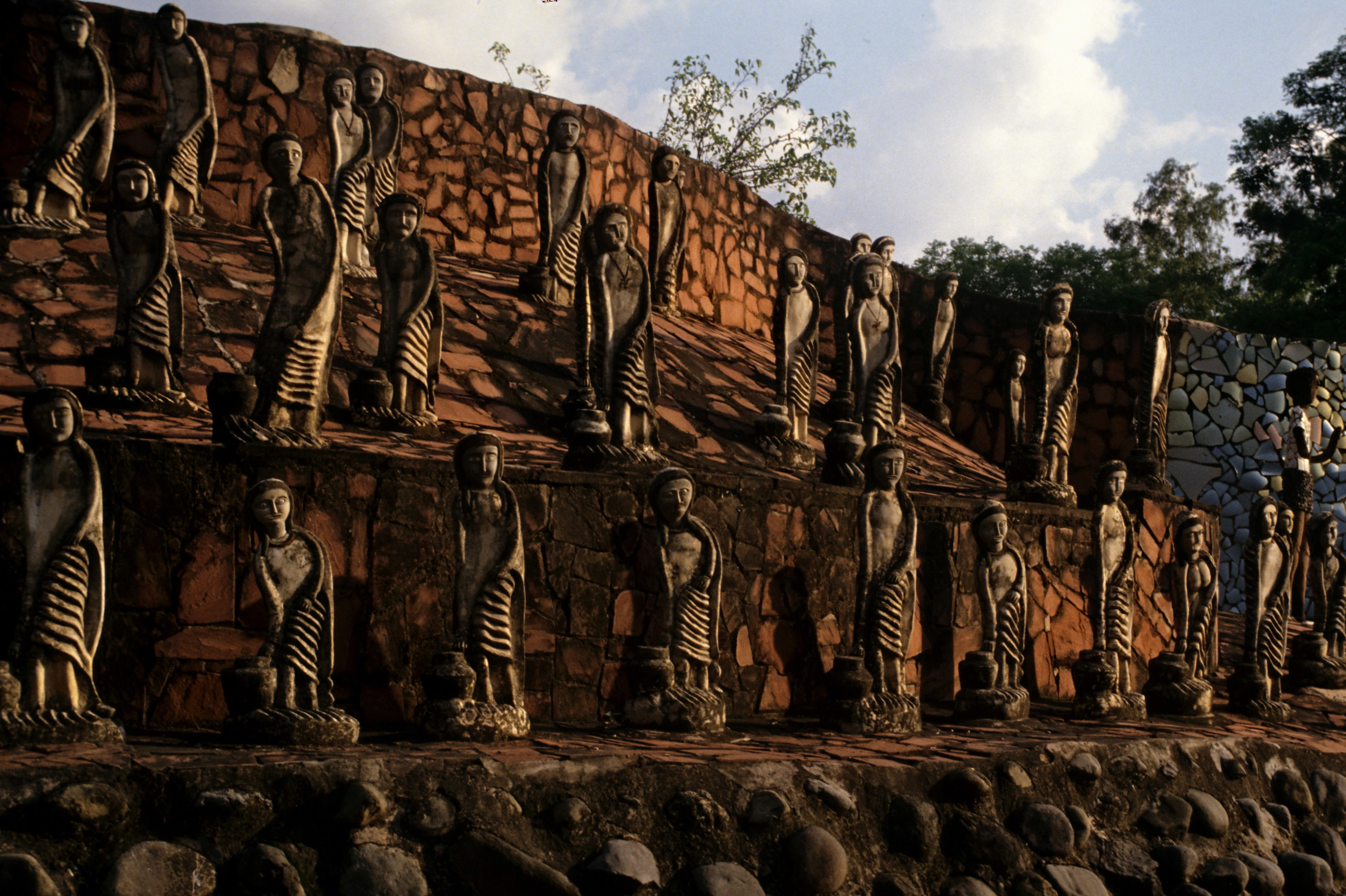Outdoor sculpture parks and open-air galleries offer a child-friendly cultural experience outside of traditional art venues. Why spend your holiday indoors when you could be clambering over hills filled with modern and contemporary art, discovering street art in the concrete jungle, or tracking down a sculpture garden that is hidden in an actual jungle? And if you don’t mind getting wet, there’s even an underwater sculpture museum. Clint McLean rounds up the best sites to find outdoor art.
Gibbs Farm, New Zealand
Outdoor sculptures spill across 1000 acres of land at Gibbs Farm, tumbling towards the ocean and coming to rest just beyond the water’s edge. Upon entering the private property, the first artwork you’ll encounter is Zhan Wang‘s Floating Island of Immortals. The stainless-steel sculpture sits serenely in the centre of a pond, reflecting and distorting earth, land and water, as it references a different kind of Penjing (Chinese miniature landscapes). Among the other 28 sculptures you’ll find as you meander westward is Richard Serra’s Te Tuhirangi Contour. The 6-meter-high, 252-meter-long steel-plate fence gracefully traces a line through the landscape and both interrupting and becoming part of the landscape. Further on, Peter Roche’s Saddleblaze marries an old western movie set with a eucalyptus grove lit up by eerie red lights. And near the harbour stands the world’s largest Tesla coil, throwing actual bolts of lightning towards the ocean. Gibbs Farm opens only a couple of days a month (rain or shine) and it’s by appointment only so make sure to book in advance. There’s no entrance fee, but nor are there any guides, tours, dining facilities, or golf carts – just one of the world’s greatest sculpture exhibitions
13th Arrondissment, Paris, France
Move over, Belleville – the 13th arrondissement is the best place in Paris to see street art. The French capital is a great city for walking tours and the abundance of world-class urban art makes the area around the National Library perfect for an afternoon away from the crowds. Thanks to a transformation led by the district’s mayor, the once drab and forgotten neighborhood is becoming increasingly hip and innovative. Street art has been central to the rebranding and thought-provoking artworks emblazoned on buildings have given the district a striking facelift. Among the 50 or so artworks in the neighborhood are multi-story murals by renowned international street artists. Shepard Fairey, the artist behind the famous Obama “HOPE” image, has contributed a few, including one inspired by and taking its name from the French motto “Liberté, égalité, fraternité”. Art critic Peter Frank once referred to British artist D*Face as “sharper and cleverer by half than Damien Hirst” painted “Love Won’t Tear us Apart” in the distinctive comic book style he’s famous for, while French-Tunisian artist eL Seed left his mark with monumental Arabic “calligraffiti” – as he calls it – which also graces facades in Australia, Canada, Egypt, Qatar, Tunisia and beyond. And if you’d prefer to ride your urban art tour instead of walking it, take the elevated line 6 of the Paris metro and keep your eyes peeled as you careen past the open-air artworks.
Rock Garden of Chandigarh, Chandigarh, India
The cement figures adorned with scraps and shards of building debris in the Rock Garden of Chandigarh could be either considered outsider art, Art Brut or even folk art. Regardless of the label, the 40-acre site can only be called astonishing, because of the sculptures – which are extraordinary – and because of the backstory as well.
In the early 1960s, a road inspector named Nek Chand secretly cleared a small patch of forest in northern India to make himself a small garden. The forest was protected government land and was to be free of development. Despite this, Chand began creating human and animal sculptures in the garden for what he called his “Kingdom of Gods and Goddesses.” Crowds of his simple, stiff figures decked out in broken tile, glass and pottery, rags and other scavenged material multiplied in secret for over a decade. When it was eventually discovered in 1975, the site spanned 12 acres of interconnected courtyards filled with dancers, villagers, musicians and animals. The local government considered demolishing the site, but instead wisely gave Chand a salary and 50 helpers to maintain and expand the open-air gallery. At the time of the self-taught artist’s death in 2015, the rock garden contained about 2000 figures. Today it stands as the province’s top attraction and as a symbol of what one dedicated and passionate artist can accomplish.
MUSA, Cancun, Mexico
This underwater sculpture park blends art, tourism and ocean conservation, but you’ll need to scuba dive or snorkel to see it. Just off the coast of Cancun, 500 or so sculptures have been submerged to create an artificial reef and promote marine life. The 200 tons of artworks are at depths between 3.5 and 8 meters, making them easily accessible even to beginner divers. Glass-floored boat tours are also available for the less adventurous and the aqua-phobic.
Six sculptors are involved in the underwater project, but British artist Jason Decaires Taylor is responsible for the majority of the pieces; he’s also contributed to many of the other large underwater sculpture parks around the world. A standout at MUSA is “The Dream Collector”, whose main character stands contemplative with his faithful dog at his feet and books and coffee at his side. Naturally, he’s oblivious to the gawking divers swirling around and this only heightens the intimacy of the scene. The largest cluster of figures, “The Silent Evolution”, offers countless narratives as the statues linger endlessly in a frozen moment like a forgotten army awaiting orders. But the most fascinating aspect of these sculptures is seeing the ocean reclaim them, just as those of us above ground will eventually be absorbed back into our environment.
Images courtesy of @aboveandbelownz, @thedesignfiles, @graffitistreets, @siscardwell, @lavanya.mathur, @cancun.tour and @topturismoma




